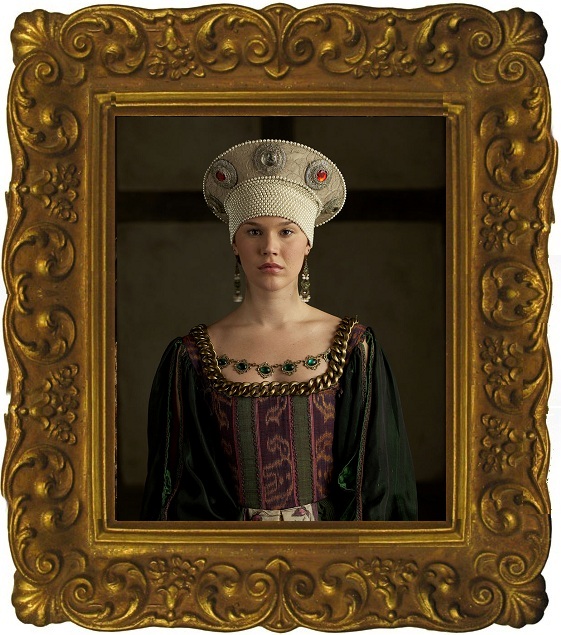 Anne of Cleves (22 September 1515– 16 July 1557) was a German noblewoman and the fourth wife of Henry VIII of England and as such she was Queen of England from 6 January 1540 to 9 July 1540. The marriage was never consummated, and she was not crowned queen consort. Following the annulment of their marriage, Anne was given a generous settlement by the King, and thereafter referred to as the King's Beloved Sister.
Anne of Cleves (22 September 1515– 16 July 1557) was a German noblewoman and the fourth wife of Henry VIII of England and as such she was Queen of England from 6 January 1540 to 9 July 1540. The marriage was never consummated, and she was not crowned queen consort. Following the annulment of their marriage, Anne was given a generous settlement by the King, and thereafter referred to as the King's Beloved Sister.
Anne was the subject of two portraits by Hans Holbein the younger who painted her in 1539. The artist Hans Holbein the Younger was dispatched to paint portraits of Anne and her younger sister, Amelia, both of whom Henry was considering as his fourth wife. Henry required the artist to be as accurate as possible, not to flatter the sisters. The two versions of Holbein's portrait are in the Louvre in Paris and the Victoria and Albert Museum in London. Negotiations with Cleves were in full swing by March of 1539. Cromwell oversaw the talks, and a marriage treaty was signed on 4 October of that year.
Henry valued education and cultural sophistication in women, but Anne lacked these: she had received no formal education but was skilled in needlework and liked playing card games. She could read and write, but only in German. Nevertheless, Anne was considered gentle, virtuous, and docile, qualities that made her a suitable candidate for Henry.
Anne was described by the French ambassador, Charles de Marillac, as tall and slim, "of middling beauty, and of very assured and resolute countenance". She was dark haired, with a rather swarthy complexion, appeared solemn by English standards, and looked old for her age. Holbein painted her with high forehead, heavy-lidded eyes and a pointed chin. Henry was impatient to see his future bride. He went to meet her at Rochester and was promptly disappointed. He felt he had been misled, for everyone had praised Anne's attractions: "She is nothing so fair as she hath been reported," he complained. Henry urged Cromwell to find a legal way to avoid the marriage but, by this point, doing so was impossible without endangering the vital alliance with the Germans.
Despite Henry's very vocal misgivings, the two were married on 6 January 1540 at the royal Palace of Placentia in Greenwich, London by Archbishop Thomas Cranmer. The phrase "God send me well to keep" was engraved around Anne’s wedding ring. Immediately after arriving in England, Anne conformed to the Anglican form of worship, which Henry expected. The couple's first night as husband and wife was not a happy one. Henry confided to Cromwell that he had not consummated the marriage, saying, "I liked her before not well, but now I like her much worse".
Anne was commanded to leave the Court on 24 June, and on 6 July she was informed of her husband's decision to reconsider the marriage. Witness statements were taken from a number of courtiers and two physicians which register the king's disappointment at her appearance. Henry had also commented to Thomas Heneage and Anthony Denny that he could not believe she was a virgin. Shortly afterwards, Anne was asked for her consent to an annulment, to which she agreed. The marriage was annulled on 9 July 1540, on the grounds of non-consummation and her pre-contract to Francis of Lorraine.